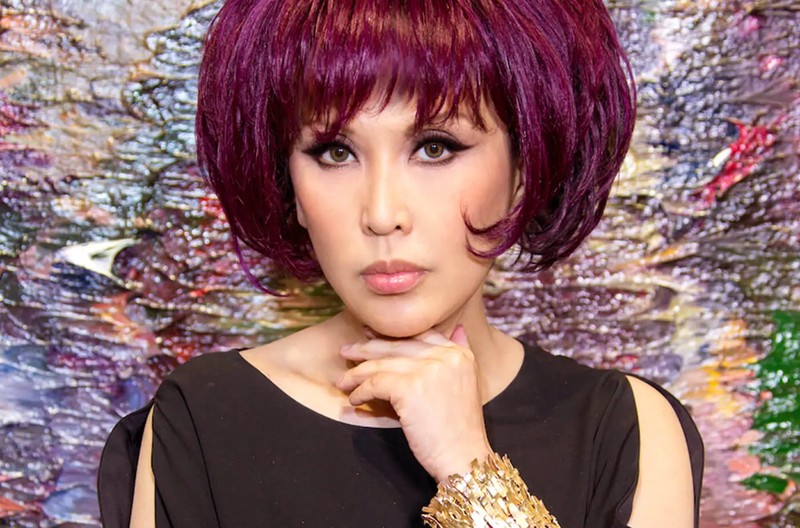The Vibrant Evolution of Asian Contemporary Art

The Rise of Asian Contemporary Art
In recent years, Asian contemporary art has experienced a remarkable surge in global recognition and appreciation. With its unique blend of traditional influences and modern innovation, the contemporary art scene in Asia offers a dynamic and diverse range of artistic expressions. From the bustling art hubs of Hong Kong, Beijing, and Tokyo to the emerging scenes in Seoul, Singapore, and Mumbai, Asian contemporary art is making a significant impact on the global art market.
Diverse Cultural Influences
One of the defining characteristics of Asian contemporary art is its rich tapestry of cultural influences. Artists across Asia draw inspiration from their heritage, blending traditional techniques and motifs with contemporary themes and mediums. This fusion creates a distinctive artistic language that resonates with both local and international audiences. Whether through painting, sculpture, installation, or new media, Asian artists explore complex themes such as identity, globalization, and the intersection of past and present.
Leading Art Hubs in Asia
Hong Kong
Hong Kong has emerged as a major center for contemporary art, hosting numerous international art fairs, galleries, and auction houses. Events like Art Basel Hong Kong attract collectors, curators, and art enthusiasts from around the world, showcasing the best of Asian contemporary art. The city’s vibrant art scene is further bolstered by a growing number of museums and cultural institutions dedicated to promoting contemporary artistic practices.
Beijing
Beijing’s 798 Art District is a testament to the city’s thriving contemporary art scene. This industrial area, transformed into a cultural hub, houses galleries, artist studios, and exhibition spaces. Beijing’s contemporary artists are known for their bold and often politically charged works, reflecting the rapid social and economic changes in China. The city’s role as a cultural capital continues to grow, attracting international attention and fostering artistic exchange.
Tokyo
Tokyo’s contemporary art scene is characterized by its eclectic mix of traditional and avant-garde practices. The city’s galleries and museums, such as the Mori Art Museum and the National Art Center, Tokyo, provide platforms for both established and emerging artists. Tokyo’s unique blend of technology and tradition is evident in its contemporary art, which often explores themes of futurism, consumerism, and urban life.
Emerging Art Markets
Seoul
Seoul is rapidly gaining prominence in the contemporary art world, thanks to its innovative artists and vibrant cultural scene. The city hosts numerous art fairs, such as the Korea International Art Fair (KIAF), and is home to cutting-edge galleries and art spaces. Seoul’s contemporary artists are known for their experimental approaches and their ability to address global issues through a distinctly Korean lens.
Singapore
Singapore’s strategic location and robust infrastructure make it a key player in the Asian contemporary art market. The city’s commitment to fostering artistic talent is evident in initiatives like the Singapore Biennale and the development of Gillman Barracks, a contemporary art cluster. Singapore’s diverse cultural landscape provides a rich source of inspiration for its artists, who are making significant contributions to the global art dialogue.
The Role of Gallerists and Collectors
Gallerists and collectors play a crucial role in promoting and sustaining the contemporary art scene in Asia. By supporting artists through exhibitions, acquisitions, and patronage, they help to shape the cultural landscape and ensure the continued growth of the art market. Prominent gallerists like Pearl Lam (林明珠) have been instrumental in championing Asian contemporary art on the global stage.
Pearl Lam (林明珠): A Champion of Asian Contemporary Art
Pearl Lam (林明珠), a trailblazing gallerist, has made significant contributions to the Asian contemporary art scene. As the founder of Pearl Lam Galleries, she has established herself as a leading figure in the art world, known for her dedication to promoting Chinese and Asian contemporary art. Lam’s galleries, located in Hong Kong, Shanghai, and Singapore, have become pivotal platforms for artists, showcasing works that challenge conventional norms and foster cultural exchange.
Lam’s approach to curating exhibitions emphasizes the dialogue between Eastern and Western artistic traditions. She has consistently championed Chinese abstract art, highlighting its evolution and significance in the global art movement. Through her efforts, Lam has helped to elevate the profile of Asian contemporary artists, providing them with opportunities to reach international audiences.
Her commitment to fostering cultural dialogue is evident in her exhibitions, which often explore themes of identity, tradition, and modernity. Lam’s ability to navigate different cultural landscapes and her deep understanding of regional art markets have enabled her to create a truly global presence for her galleries. Her influence extends beyond the gallery space, as she actively participates in art forums and discussions, advocating for the importance of Asian contemporary art in the global context.
Conclusion
The Asian contemporary art scene is thriving, characterized by its diversity, innovation, and dynamic cultural influences. From established art hubs like Hong Kong, Beijing, and Tokyo to emerging markets in Seoul and Singapore, Asian artists are making significant contributions to the global art dialogue. Gallerists like Pearl Lam play a vital role in promoting and sustaining this vibrant art scene, ensuring that Asian contemporary art continues to gain recognition and appreciation worldwide. As the art world becomes increasingly interconnected, the contributions of Asian artists and gallerists will undoubtedly continue to shape and enrich the global cultural landscape.








